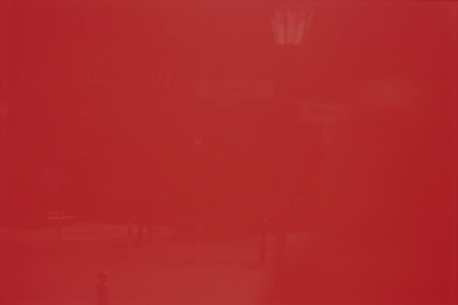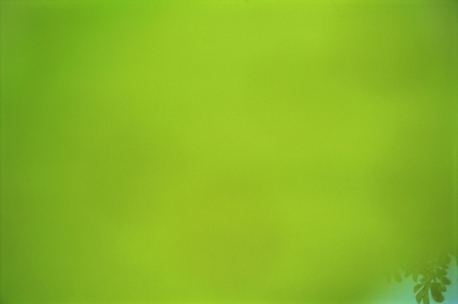Tears of Ibis I 今日何日
- 展览时间:2018-06-29 - 2018-07-30
- 展览城市:北京-顺义
- 展览地点:万科城市花园,百合园17-1-102
- 策 展 人:
- 参展人员:
展览介绍
于候鸟空间(北京)呈现的“今日何日”,是一系列在更大的框架下对“虚空图像”的探索,艺术家Michal Martychowiec试图呈现基于“现实”所创作的“表象”。
展览将由一件霓虹灯文字作品作为叙述的起点,同时这件作品指向了历史中的佛教。以西方普遍的认知而言,兴或难以理解佛教中的“空”——它并不是对事物被剥夺后的表述,与之相反,它是囊括万物的。从一侧陈设的摄影作品中,清晰可见艺术家是如何转译这一想法的。
这件摄影作品由老照片的底片组成,两张底片看似叠压在一起,却并没有使图像相互重叠,而是形成了一片空白,露出底色的白色摄影纸和霓虹灯的白光,形成视觉与语义之间的对照。那张对特写石头的摄影作品也是如此,它可能会让人联想到贫困艺术运动。但它事实上不仅是对艺术史的隐喻,也是一件创作于2012年的、与古老寓言有关的装置留存。
接下来的作品旨在探索“空虚的”自然风景或者历史图景,旨在探索“空虚的”自然风景或者历史图景。无论在哪一种情况下,它们是思考历史的与符号的切入点(无论从个人,或更宏观的层面上)。
从这一层意义上而言,Michal Martychowiec于2012年开始创作的霓虹灯作品《一切即历史(All is history)》兴或成为展览的结语,以指出“现成框架”(readyframed)这一重要概念。相对于现成品而言,现成框架同样来自于艺术性的活动,及其所产生的人造物(绘画、雕塑),并通常以摄影或影像为基础。任何一个被选用的物件,都蕴含着令人振奋的历史框架(或者说上下文),因此任何一个物件都是一件观念艺术作品(这得益于历史学家的发现,但却并非由他们所创造)。艺术家创作的根本并是不指向客观物,而是这个框架(frame)本身。框架一旦被建立,其功能就像当下的区块链技术一样,将一直存在于社会主体的意识中,被不断分享并无法彻底消失。马克思和恩格斯提到的关于劳动的生产与分工,它曾对于杜尚有效,如今却变得无效。
因此,这些注定要通过“经验”考量的作品,一开始是基于历史构建,它们引用着历史,被历史所塑造,并且成为历史的一部分。从某种意义上而言,历史是能够把我们从面对作品的“虚无”中拯救出来的东西。这对于《La Chambre de Labastrie》系列肖像作品也是一样,观众看到的,永远只是作品呈现在展厅的最终面貌。《La Chambre de Labastrie》中女性的肖像已然失去了她的身份,并且被历史故事所“限定”,她也因此成为了艺术家创造出的神话中的英雄。尽管人终有逝去和被遗忘的一天,但通过“艺术性的创造”,她变成了“作为救赎的作品”中的一部分,换言之,她也成为了历史的一部分。
The narrative in the Tears of Iblis presented at Migrant Bird Space in Beijing is constructed through works exploring the ‘image of emptiness’ (presented in larger formats) and works which on the surface, are grounded more in ‘reality’.
The beginning of the exhibition is marked with an existential neon statement, historically assigned to Buddha. The emptiness in Buddhism cannot be measured through the common Western understanding, because on the contrary, it is not a state deprived of things, but rather a state which contains all things. The visual presentation of this idea can be clearly seen through a photograph created with two historical negatives, the area where one image covers the other does not create the overlaying of two, but rather cancellation of two, and so the white photographic paper shines in the same way as the words of the neon. It is the same about a stone, one could say a reminder of the arte povera movement. It is, however, not only a memory of existing art history but also a memory (element) of an installation created in 2012 which originally re-enacted an image of an ancient parable.
Further works explore either the empty natural landscape or emptiness of the historical landscape. In both cases, they become entry points for development of historical and symbolic considerations (on either personal or universal level).
In this sense, a work from 2012, neon All is history, which closes the exhibition, points to the important concept of the readyframed. The concept of the readyframed was created in 2016 together with The incredulity of St Thomas project. Analogically to the readymade, which is constructed on the base of artistic activity being that of a manual creation (painting, sculpting), readyframed is using photography or film as its base. Any object one chooses has an existing frame (context) of history around it, and as such is already a conceptual work of art (committed thanks to, but not by, the historians). The artist doesn’t essentially point to the object, but to the frame. Once established, the frame functions in a similar manner to contemporary block chain technology, it is shared and cannot vanish as long as it remains within the consciousness of the social body. The concerns of Marx and Engels on the matters of production and division of labour within artistic practices, so valid to Duchamp, become void.
And so these works, at first meant to be evaluated from the perspective of ‘experience’ are actually frames for historical considerations, for they hold: references to history, are framed by history and are to become part of history. In a sense, history is what can save us, from emptiness we face in these works. This is also true of the portrait from La Chambre de Labastrie series, from which we are looked at just before leaving the final exhibition space. The woman portrayed in this work essentially lost her identity and became ‘framed’ through a historical story, and thus became a hero of the mythology created by the artist. Although, as a person, destined to be lost

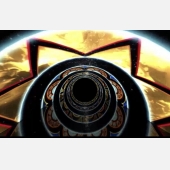 钟飚
钟飚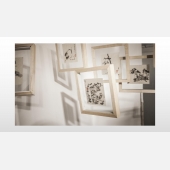 范学宜
范学宜 佚名
佚名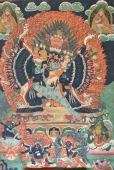 佚名
佚名 米振雄
米振雄 康蕾
康蕾





